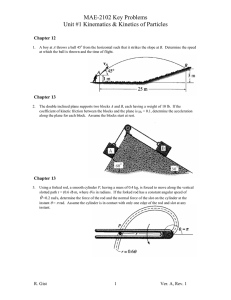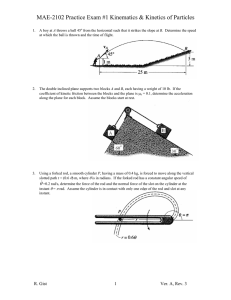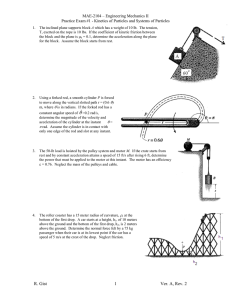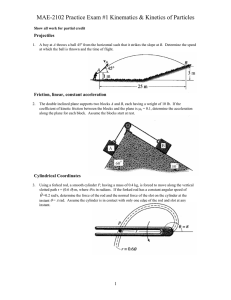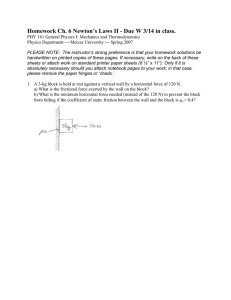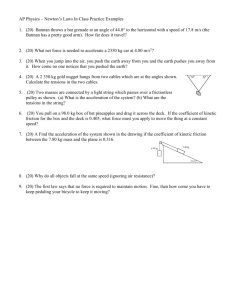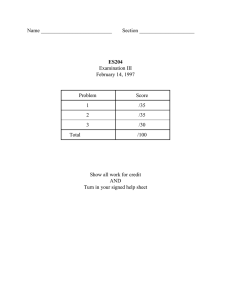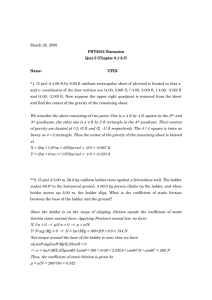MAE-2102 – Dynamics
advertisement
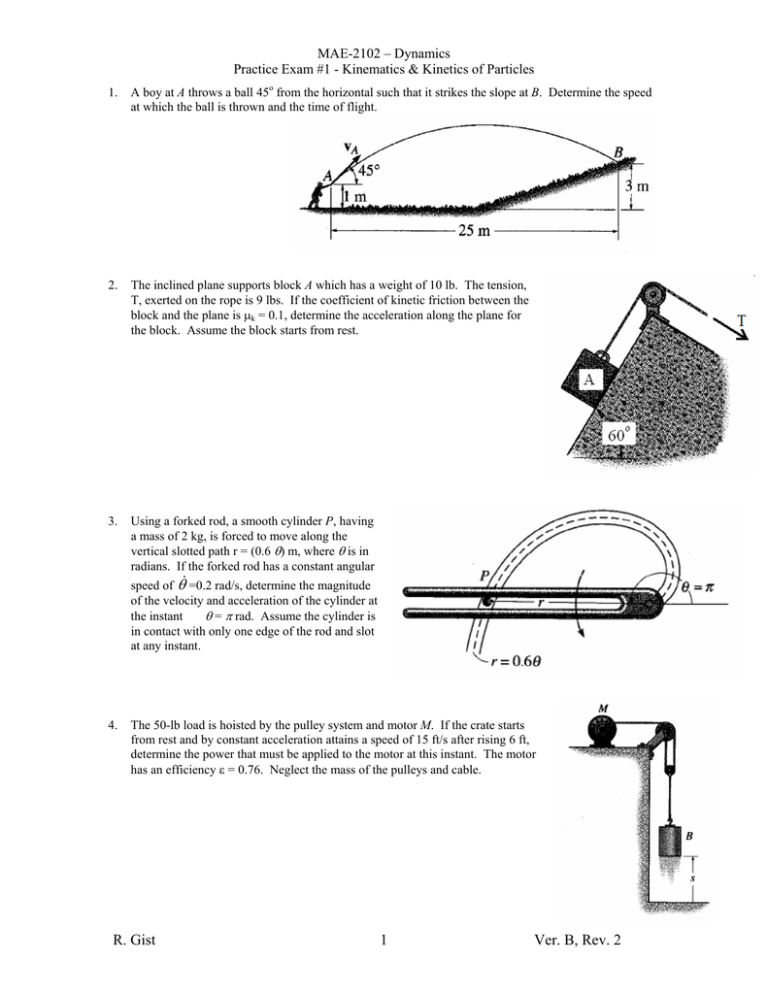
MAE-2102 – Dynamics Practice Exam #1 - Kinematics & Kinetics of Particles 1. A boy at A throws a ball 45o from the horizontal such that it strikes the slope at B. Determine the speed at which the ball is thrown and the time of flight. 2. The inclined plane supports block A which has a weight of 10 lb. The tension, T, exerted on the rope is 9 lbs. If the coefficient of kinetic friction between the block and the plane is μk = 0.1, determine the acceleration along the plane for the block. Assume the block starts from rest. 3. Using a forked rod, a smooth cylinder P, having a mass of 2 kg, is forced to move along the vertical slotted path r = (0.6 θ) m, where θ is in radians. If the forked rod has a constant angular speed of θ =0.2 rad/s, determine the magnitude of the velocity and acceleration of the cylinder at the instant θ = π rad. Assume the cylinder is in contact with only one edge of the rod and slot at any instant. 4. The 50-lb load is hoisted by the pulley system and motor M. If the crate starts from rest and by constant acceleration attains a speed of 15 ft/s after rising 6 ft, determine the power that must be applied to the motor at this instant. The motor has an efficiency ε = 0.76. Neglect the mass of the pulleys and cable. R. Gist 1 Ver. B, Rev. 2 MAE-2102 – Dynamics Practice Exam #1 - Kinematics & Kinetics of Particles 5. The roller coaster has a radius of curvature, ρ, at the bottom of the first drop of 15 ft. Determine the normal force felt by a 75 kg passenger when their car is at its lowest point if the car has a speed of 5 ft/s at the crest of the drop. Neglect friction. 6. The 20-lb cart B is supported on rollers of negligible size. If a 10-lb suitcase A is thrown horizontally on it at 10 ft/s, determine the time t interval before A stops relative to B. The coefficient of kinetic friction between A and B is μk =0.4. 7. Determine the magnitude of the angular momentum of the 2.5-kg particle about point O. 8. Disk A has a mass of 1 kg and is sliding forward on a smooth surface with a velocity (νA)1 = 5 m/s when it strikes the 3 kg disk B, which is sliding towards A at (νB)1 = 2 m/s, with direct central impact. If the coefficient of restitution between the disks is e = 0.4, compute the velocities of A and B just after collision. R. Gist 2 Ver. B, Rev. 2
